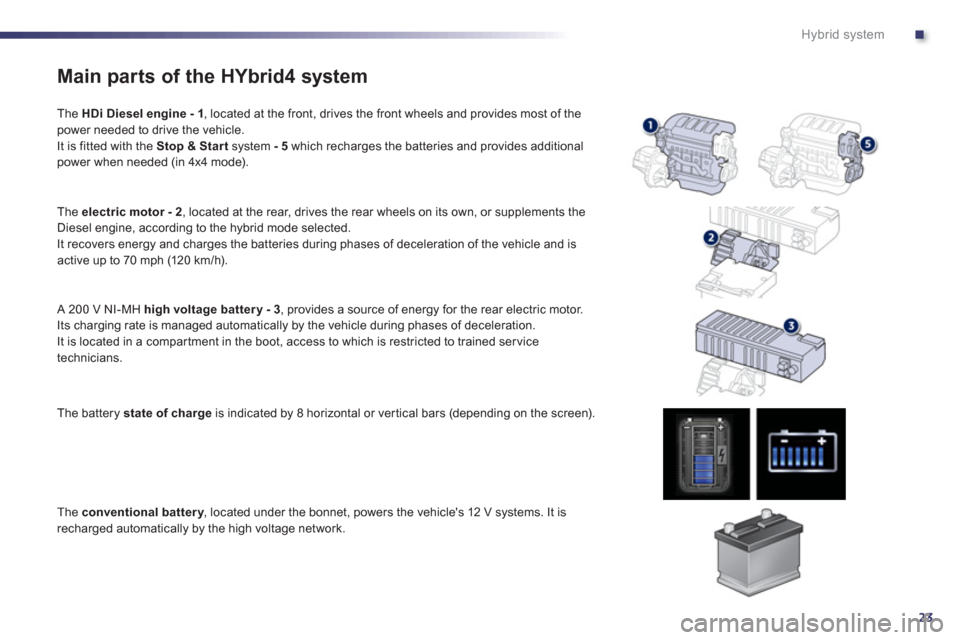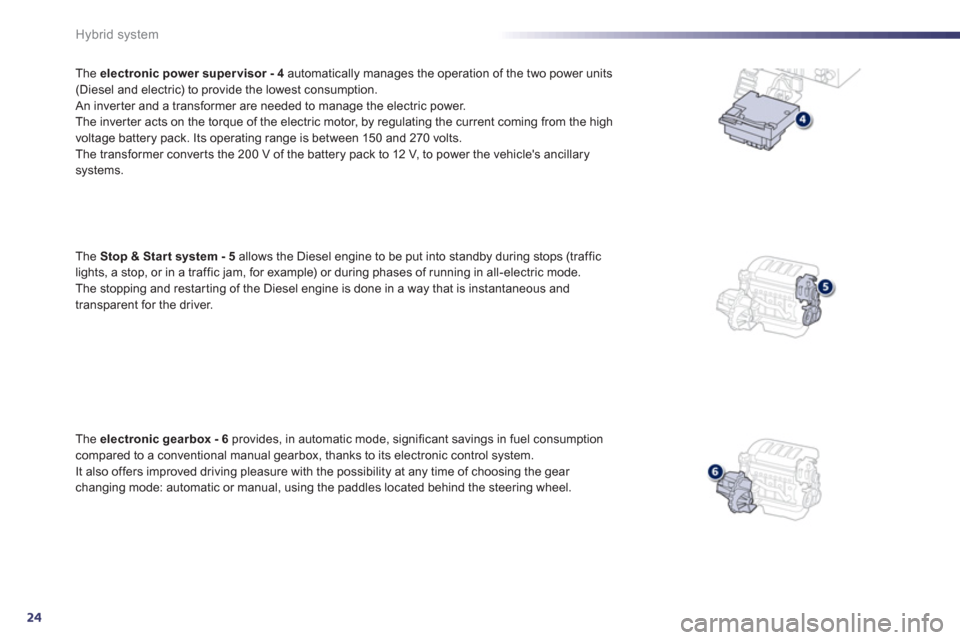Page 4 of 304

.
.
Contents
Instrument panel 45
Indicator and warning lamps 46
Gauges and indicators 57
Tr ip computer 62
Setting the date and time 65
Instruments and controlsFamiliarisation
Remote control key 66
Alarm 76
Electric windows 78
Boot 80
Motorised tailgate 81
Panoramic sunroof 84
Fuel tank 85
Diesel misfuel prevention 86
Access
Front seats 88
Rear seats 92
Mirrors 94
Steering wheel adjustment 96
Interior fi ttings 97
Boot fi ttings 100
Heating and Ventilation 106
Dual-zone digital air conditioning 108
Quad-zone digital air conditioning 111
Rear screen demist - defrost 116
Programmable Heating / Ventilation 117
Comfort
Electric parking brake 119
6-speed electronic gearbox 126
Hill star t assist 130
Head-up display 131
Speed limiter 134
Cruise control 136
Parking sensors 138
Parking space sensors 140
Driving
Lighting controls 142
LED lamps 145
Automatic illumination of headlamps 147
Headlamp adjustment 150
Directional lighting 151
Wiper controls 152
Automatic rain sensitive wipers 154
Cour tesy lamps 156
Interior mood lighting 157
Visibility Hybrid system
Presentation 22
Starting / switching off 25
Ready lamp 29
HYbrid4 mode selector 29
Energy consumption / generation indicator 32
Display of hybrid power fl ow 33
Eco off 36
Eco-driving 37
Consumption 39
High voltage battery 40
Vehicle recovery 44
Page 5 of 304
.
.
Contents
Child seats 158
ISOFIX child seats 164
Child lock 167
Child safety
Direction indicators 168
Emergency or assistance call 169
Horn 169
ESP system 170
Seat belts 173
Airbags 176
Safety
Te m p o r a ry puncture repair kit 180
Changing a wheel 186
Changing a bulb 191
Changing a fuse 198
12 V battery 202
Energy economy mode 205
Changing a wiper blade 206
Recovering the vehicle 207
Vehicle recovery 209
To w i ng a trailer 210
Fitting roof bars 212
Accessories 213
Practical information
Opening the bonnet 216
Running out of fuel (Diesel) 217
Diesel engine 218
Checking levels 219
Checks 222
Checks
Electric motor 225
Diesel engine 226
Diesel weights 227
Dimensions 228
Identifi cation markings 229
Technical data
Emergency or assistance 231
JBL equipment 233
Peugeot Connect Navigation (RT6) 235
Audio equipment and telematics
Alphabetical index
Visual search
Page 6 of 304

4
Familiarisation
Presentation of the HYbrid4 system
Thank you for choosing this HYbrid4 vehicle,
which has characteristics that are different from conventional vehicles.
Study this handbook to learn about the specific hybrid functions and for more information, refer
to the "Hybrid System" section.
22
The HYbrid4 technology allows two sources of energy to be associated in an effective manner:
the Diesel HDi engine, which drives the front
wheels and the electric motor, which drives the
rear wheels.
These two motors can operate alternately or simultaneously, according to the hybrid modeselected and the driving conditions.
The electric motor alone provides power for
the vehicle in "ZEV" (Zero Emissions Vehicle) mode, and in "Auto" mode for running at slowspeed and low load. It also assists the Dieselengine when moving off, accelerating and changing gear.
The battery that powers the electric motor is
recharged during phases of deceleration andstores the energy for subsequent use.1
.Diesel HDi engine (front wheel drive). 2. Electric motor (rear wheel drive).3.
200 V battery.4.Electronic power supervisor.
5.Stop & Start system. 6
.6 -speed electronic gearbox.7. Electrical flow. 8.HYbrid4 mode selector.
Page 14 of 304

12
Familiarisation
11.Front door window demisting/defrostingvent.
12.Windscreen demisting/defrosting vent.
13
. Steering lock and star ting with the key. 14 .
Starting using the electronic key.
15. Audio equipment steering wheel controls.
16.Wiper / screenwash / trip computer stalk.
17. Central locking and hazard warningbuttons.
18. Screen.
19.Central adjustable air vents.
20.Passenger's airbag. 21. Side adjustable air vents.
Instruments and controls
1.
Cruise control / speed limiter controls. 2.
Headlamp height adjustment. 3.
Lighting and direction indicator stalk
4.
Instrument panel. 5.
Driver's airbag.Horn.
6.Gear selector.
7. HYbrid4 mode selector. 8.12 V accessory socket
USB por t / auxiliary socket. 9. Bonnet release lever.10.Fusebox.
22.
Glove box / Passenger's airbag deactivation. 23.
Electric parking brake.
24.
Central armrest with storage. 25.Storage (according to version).26.Audio system. 27.
Heating / air conditioning controls.28.
Alarm / Peugeot Connect SOS -
Peugeot Connect Assistance.29. Peugeot Connect Navigation (RT6)controls. 30.
Massage / Adaptive lighting / Parkingspace sensor.
Page 16 of 304
14
Familiarisation
Sitting comfortably
Head restraint adjustment
901
.Release the adjustment mechanism.
2. Adjust for height and reach. 3.
Lock the adjustment mechanism.
Steering wheel adjustment
96
For reasons of safety, these operations must only be carried out with thevehicle stationary.
Heated seats control
0
: off.1: low.2
: medium. 3
: high. To lower it, press button
A.
To raise it, guide the head restraint upwards to
the desired position.
90
Page 24 of 304
22
Hybrid system
Presentation
energy to be associated in an effective manner:
the Diesel HDi engine, which drives the front
wheels and the electric motor, which drives the rear wheels.These two motors can operate alternately or simultaneously, according to the hybrid modeselected and the driving conditions.
The electric motor alone provides power for
the vehicle in "ZEV" (Zero Emissions Vehicle) mode, and in "Auto" mode for running at slowspeed and low load. It also assists the Dieselengine when moving off, accelerating and changing gear.The battery that powers the electric motor is recharged during phases of deceleration andstores the energy for subsequent use.
1.Diesel HDi engine (front wheel drive). 2. Electric motor (rear wheel drive).3.
200 V battery.4.Electronic power supervisor.
5
.Stop & Start system. 6
.6 -speed electronic gearbox.7. Electrical flow. 8.HYbrid4 mode selector.
Page 25 of 304

.
23
Hybrid system
Main parts of the HYbrid4 system
The HDi Diesel engine - 1
, located at the front, drives the front wheels and provides most of the power needed to drive the vehicle.
It is fitted with the Stop & Start
system - 5
which recharges the batteries and provides additional
power when needed (in 4x4 mode).
Th
e electric motor - 2
, located at the rear, drives the rear wheels on its own, or supplements the
Diesel engine, according to the hybrid mode selected.
It recovers energy and charges the batteries during phases of deceleration of the vehicle and is
active up to 70 mph (120 km / h).
A 200 V NI-MH high voltage battery - 3
, provides a source of energy for the rear electric motor.
Its charging rate is managed automatically by the vehicle during phases of deceleration.
It is located in a compar tment in the boot, access to which is restricted to trained service
technicians.
The batter
y state of chargeis indicated by 8 horizontal or vertical bars (depending on the screen).
The conventional battery, located under the bonnet, powers the vehicle's 12 V systems. It is yrecharged automatically by the high voltage network.
Page 26 of 304

24
Hybrid system
The electronic power super visor - 4automatically manages the operation of the two power units(Diesel and electric) to provide the lowest consumption.
An inver ter and a transformer are needed to manage the electric power.
The inver ter acts on the torque of the electric motor, by regulating the current coming from the high
voltage battery pack. Its operating range is between 150 and 270 volts.
The trans
former conver ts the 200 V of the battery pack to 12 V, to power the vehicle's ancillary
systems.
Th
e Stop & Star t system - 5
allows the Diesel engine to be put into standby during stops (traffic
lights, a stop, or in a traffic jam, for example) or during phases of running in all-electric mode.
The stopping and restar ting of the Diesel engine is done in a way that is instantaneous and
transparent for the driver.
Th
e electronicgearbox - 6provides, in automatic mode, significant savings in fuel consumption compared to a conventional manual gearbox, thanks to its electronic control system.
It also offers improved driving pleasure with the possibility at any time of choosing the gear changing mode: automatic or manual, using the paddles located behind the steering wheel.